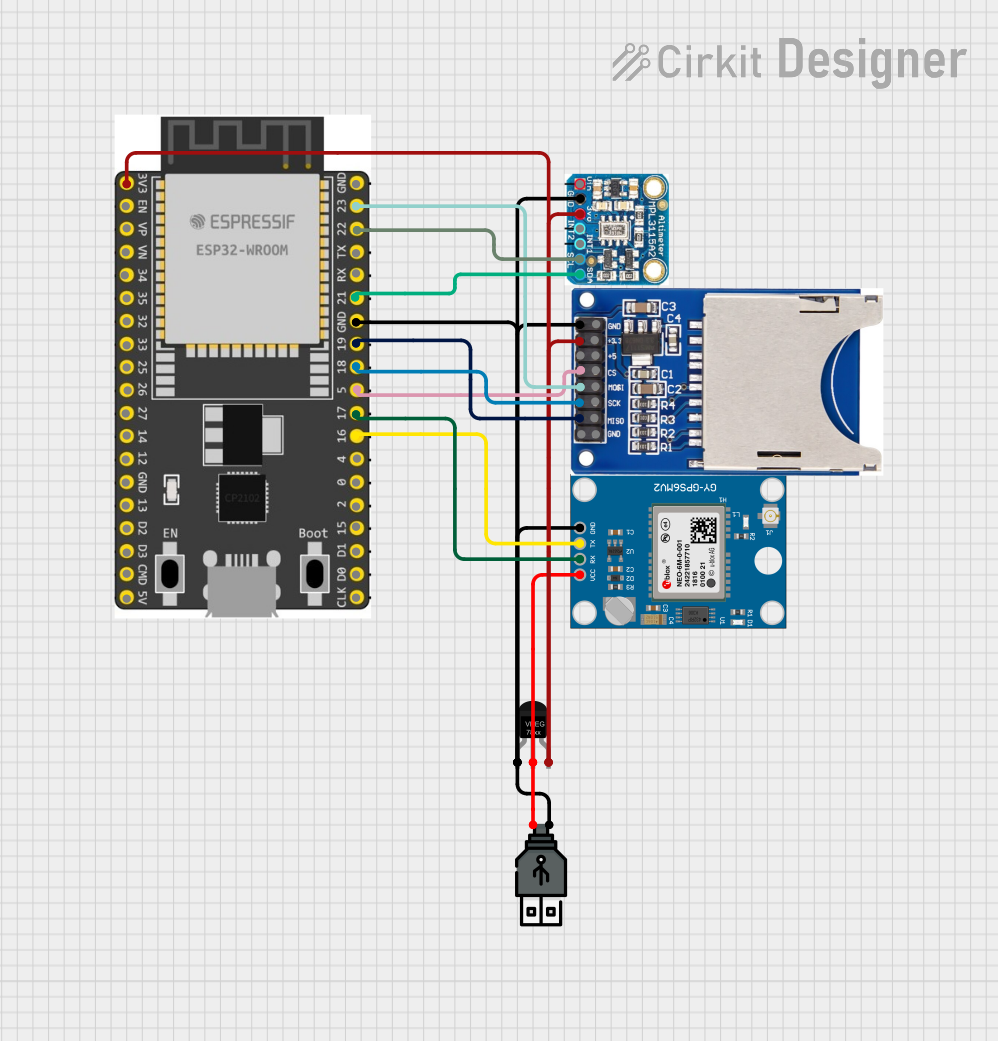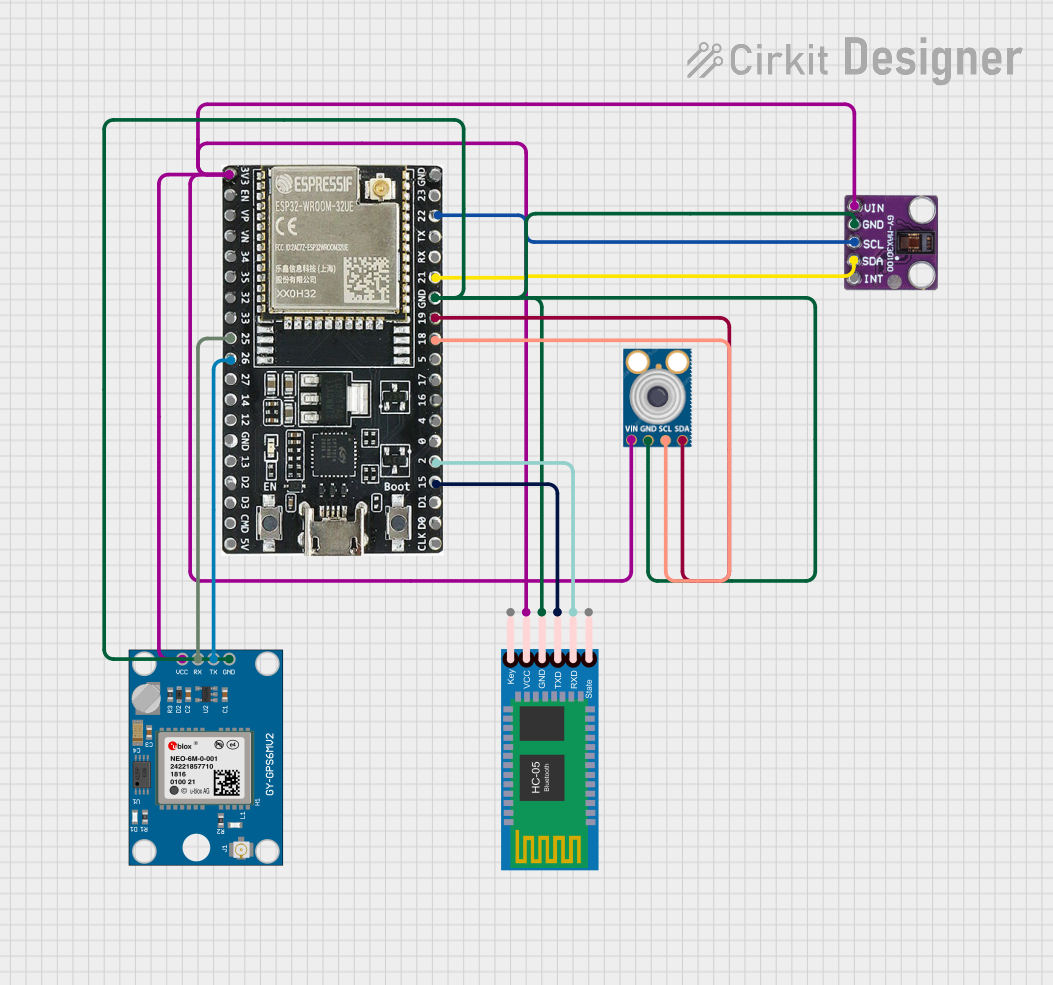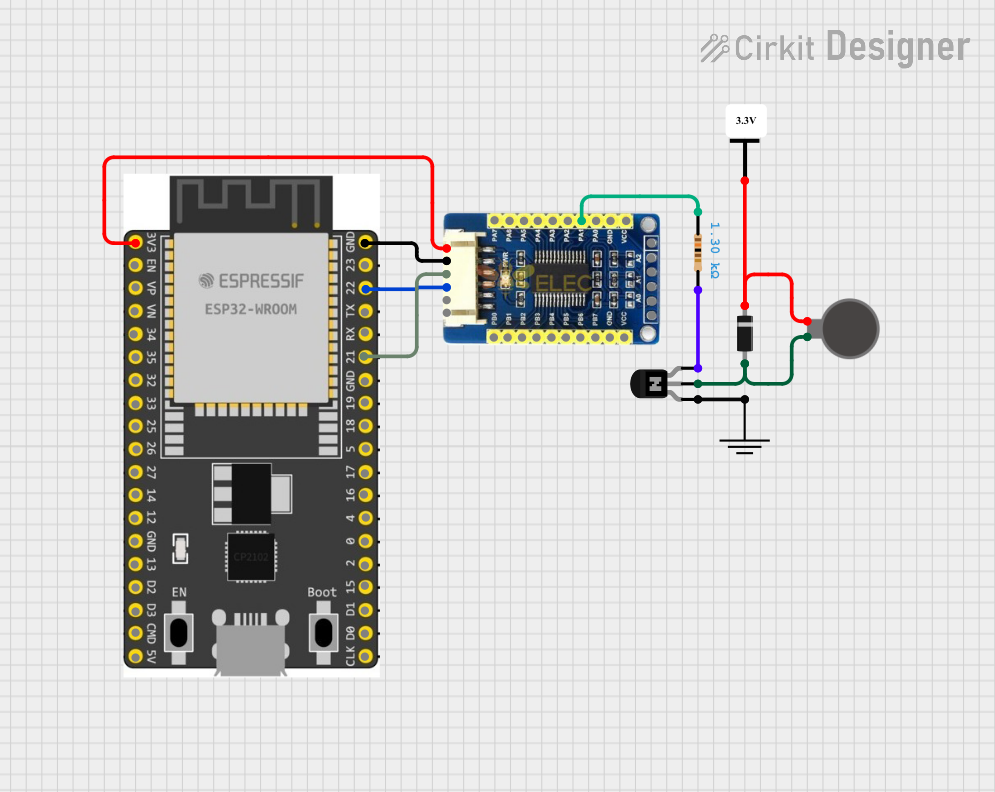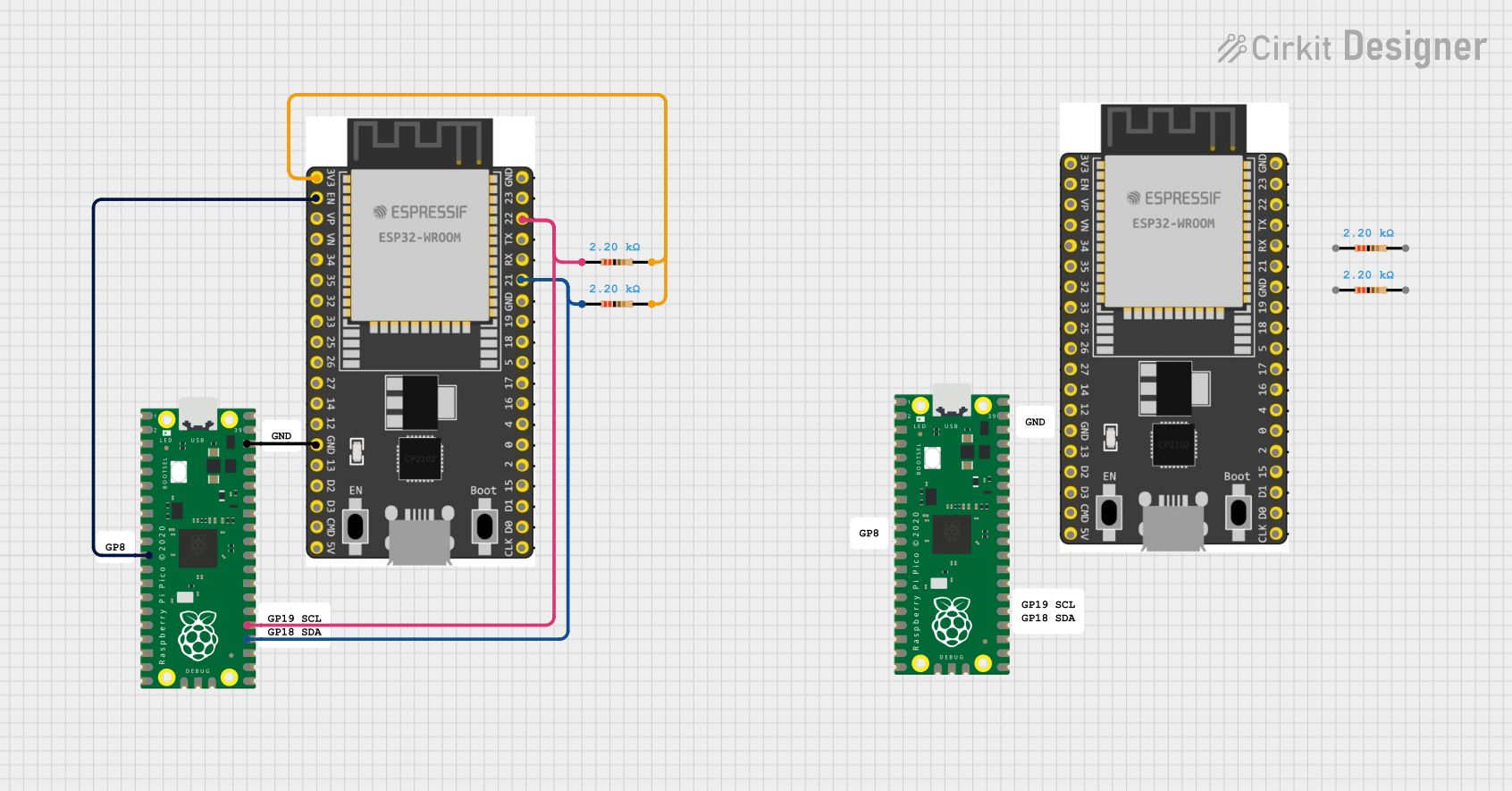
How to Use esp32-wroom-32e: Examples, Pinouts, and Specs

 Design with esp32-wroom-32e in Cirkit Designer
Design with esp32-wroom-32e in Cirkit DesignerIntroduction
The ESP32-WROOM-32E is a powerful Wi-Fi and Bluetooth microcontroller module designed for a wide range of applications. It features dual-core processing capabilities, integrated Wi-Fi and Bluetooth connectivity, and a variety of GPIO pins for interfacing with other components. This module is highly versatile and energy-efficient, making it a popular choice for IoT (Internet of Things) applications, smart home devices, wearable electronics, and industrial automation.
Explore Projects Built with esp32-wroom-32e

 Open Project in Cirkit Designer
Open Project in Cirkit Designer
 Open Project in Cirkit Designer
Open Project in Cirkit Designer
 Open Project in Cirkit Designer
Open Project in Cirkit Designer
 Open Project in Cirkit Designer
Open Project in Cirkit DesignerExplore Projects Built with esp32-wroom-32e

 Open Project in Cirkit Designer
Open Project in Cirkit Designer
 Open Project in Cirkit Designer
Open Project in Cirkit Designer
 Open Project in Cirkit Designer
Open Project in Cirkit Designer
 Open Project in Cirkit Designer
Open Project in Cirkit DesignerCommon Applications
- IoT devices and smart home systems
- Wireless sensor networks
- Wearable electronics
- Industrial automation and control systems
- Prototyping and development of connected devices
Technical Specifications
Key Technical Details
| Parameter | Value |
|---|---|
| Microcontroller | ESP32 dual-core Xtensa LX6 |
| Clock Speed | Up to 240 MHz |
| Flash Memory | 4 MB (default) |
| SRAM | 520 KB |
| Wi-Fi Standard | 802.11 b/g/n (2.4 GHz) |
| Bluetooth Version | Bluetooth v4.2 BR/EDR and BLE |
| Operating Voltage | 3.0V to 3.6V |
| GPIO Pins | 34 (multipurpose, including ADC, DAC, etc.) |
| ADC Channels | 18 (12-bit resolution) |
| DAC Channels | 2 |
| Communication Interfaces | UART, SPI, I2C, I2S, CAN, PWM |
| Power Consumption | Ultra-low power in deep sleep mode (~10 µA) |
Pin Configuration and Descriptions
The ESP32-WROOM-32E module has 38 pins. Below is a summary of the key pins and their functions:
| Pin Number | Name | Function |
|---|---|---|
| 1 | EN | Enable pin (active high) |
| 2 | IO0 | GPIO0, used for boot mode selection |
| 3 | IO2 | GPIO2, ADC2 channel 2 |
| 4 | IO4 | GPIO4, ADC2 channel 0 |
| 5 | IO5 | GPIO5, ADC2 channel 1 |
| 6 | IO12 | GPIO12, ADC2 channel 5, touch sensor |
| 7 | IO13 | GPIO13, ADC2 channel 4, touch sensor |
| 8 | IO14 | GPIO14, ADC2 channel 6, touch sensor |
| 9 | IO15 | GPIO15, ADC2 channel 3, touch sensor |
| 10 | IO16 | GPIO16, UART RX2 |
| ... | ... | ... |
| 37 | GND | Ground |
| 38 | 3V3 | 3.3V power supply |
Note: For a complete pinout diagram, refer to the official ESP32-WROOM-32E datasheet.
Usage Instructions
How to Use the ESP32-WROOM-32E in a Circuit
- Power Supply: Provide a stable 3.3V power supply to the module. Avoid exceeding 3.6V to prevent damage.
- Boot Mode: Connect GPIO0 to GND during power-up to enter bootloader mode for programming.
- Programming: Use a USB-to-serial adapter (e.g., FTDI or CP2102) to upload code via the UART interface.
- GPIO Usage: Configure GPIO pins as input, output, or alternate functions (e.g., ADC, PWM) in your code.
- Wi-Fi and Bluetooth: Use the ESP-IDF or Arduino IDE libraries to configure and manage wireless connectivity.
Important Considerations
- Voltage Levels: Ensure all connected peripherals operate at 3.3V logic levels.
- Deep Sleep Mode: Use deep sleep mode to minimize power consumption in battery-powered applications.
- Antenna Placement: Avoid placing metal objects near the onboard antenna to ensure optimal wireless performance.
Example Code for Arduino IDE
Below is an example of how to connect the ESP32-WROOM-32E to a Wi-Fi network and blink an LED:
#include <WiFi.h> // Include the Wi-Fi library
// Replace with your network credentials
const char* ssid = "Your_SSID";
const char* password = "Your_PASSWORD";
const int ledPin = 2; // GPIO2 is connected to the onboard LED
void setup() {
pinMode(ledPin, OUTPUT); // Set GPIO2 as an output
Serial.begin(115200); // Initialize serial communication
// Connect to Wi-Fi
Serial.print("Connecting to Wi-Fi");
WiFi.begin(ssid, password);
while (WiFi.status() != WL_CONNECTED) {
delay(500);
Serial.print(".");
}
Serial.println("\nWi-Fi connected!");
}
void loop() {
digitalWrite(ledPin, HIGH); // Turn the LED on
delay(1000); // Wait for 1 second
digitalWrite(ledPin, LOW); // Turn the LED off
delay(1000); // Wait for 1 second
}
Tip: Use the Serial Monitor in the Arduino IDE to view connection status and debug messages.
Troubleshooting and FAQs
Common Issues and Solutions
Module Not Responding
- Cause: Incorrect power supply or wiring.
- Solution: Ensure the module is powered with 3.3V and all connections are secure.
Wi-Fi Connection Fails
- Cause: Incorrect SSID or password.
- Solution: Double-check your network credentials in the code.
Code Upload Fails
- Cause: GPIO0 not grounded during boot.
- Solution: Hold GPIO0 low (connect to GND) while resetting the module.
Unstable Operation
- Cause: Insufficient power supply or noisy environment.
- Solution: Use a decoupling capacitor (e.g., 10 µF) near the power pins.
FAQs
Q: Can I use 5V logic with the ESP32-WROOM-32E?
A: No, the ESP32 operates at 3.3V logic levels. Use a level shifter for 5V devices.Q: How do I reset the module?
A: Pull the EN pin low momentarily to reset the module.Q: Can I use the ESP32-WROOM-32E with the Arduino IDE?
A: Yes, install the ESP32 board package in the Arduino IDE to program the module.Q: What is the maximum Wi-Fi range?
A: The range depends on the environment but typically extends up to 100 meters in open space.
By following this documentation, you can effectively integrate the ESP32-WROOM-32E into your projects and troubleshoot common issues.